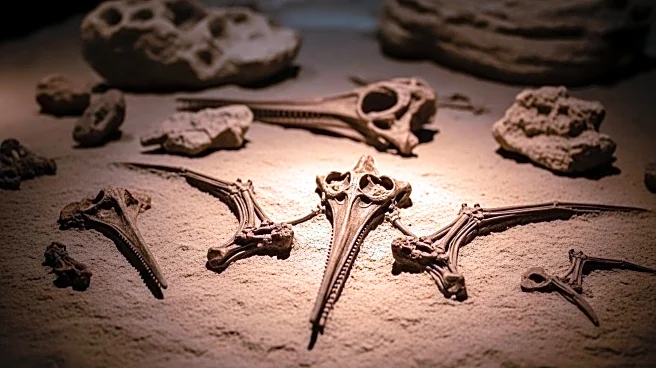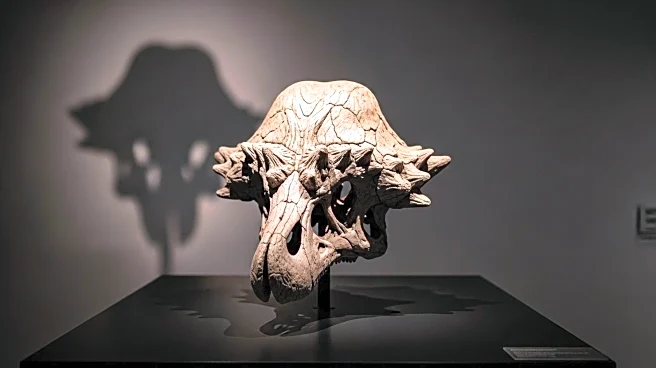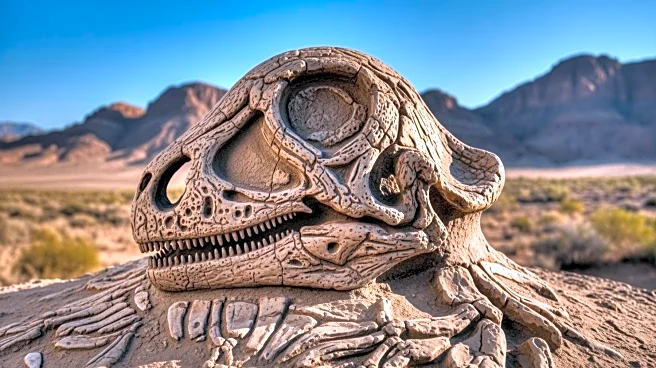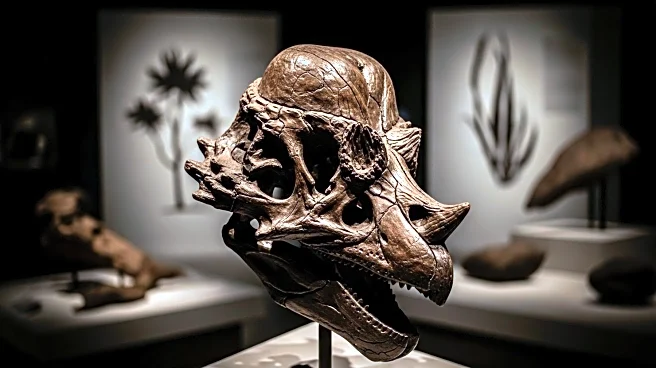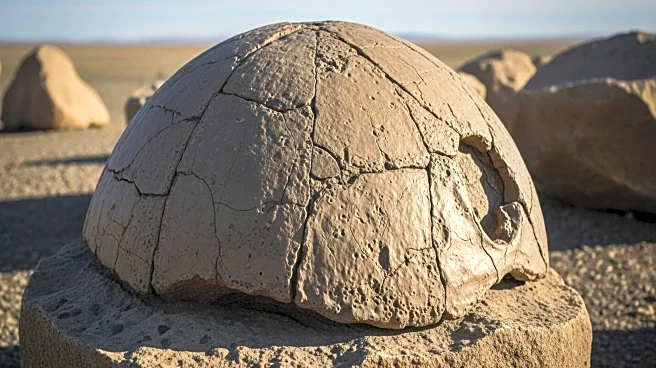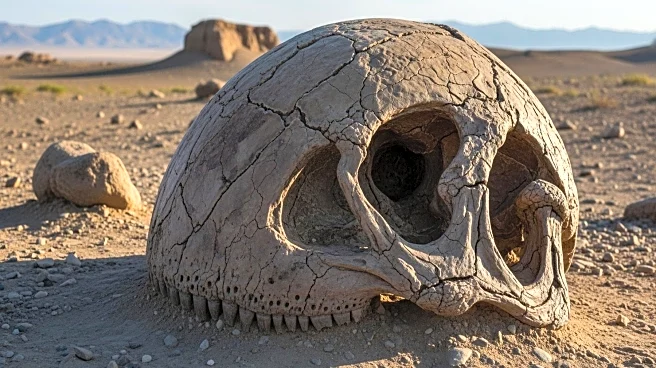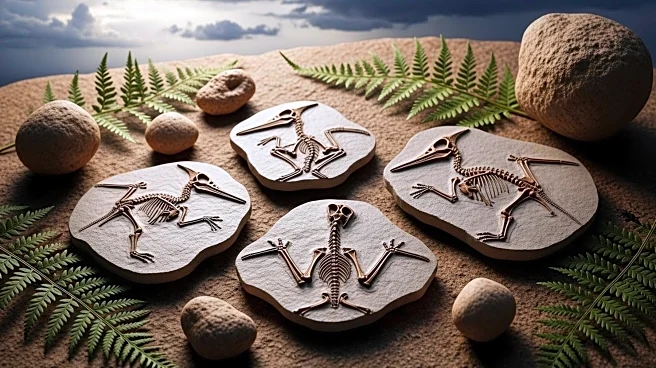What's Happening?
A newly discovered fossil in Mongolia's Gobi Desert has provided significant insights into the evolution of pachycephalosaurs, a group of dinosaurs known for their distinctive domed skulls. The fossil, identified as Zavacephale rinpoche, is the oldest and most complete skeleton of this dinosaur group found to date, dating back approximately 108 million years. The discovery was made by Tsogtbaatar Chinzorig from the Mongolian Academy of Sciences and is detailed in a study published in the journal Nature. The specimen was found in the Khuren Dukh locality of the Eastern Gobi Basin and represents a new species, offering a rare glimpse into the anatomy and biology of pachycephalosaurs. The fossil includes limbs and a complete skull, allowing researchers to study the growth stage and dome development of these dinosaurs for the first time.
Why It's Important?
The discovery of Zavacephale rinpoche is crucial for understanding the evolutionary timeline and biological development of pachycephalosaurs. This specimen predates previously known pachycephalosaur fossils by about 15 million years, filling significant gaps in the fossil record. The completeness of the fossil allows scientists to examine features such as cranial dome development and the use of stomach stones for grinding food, which were previously unknown. This find enhances the understanding of the paleobiology, locomotion, and body plan of these dinosaurs, providing insights into their socio-sexual behaviors and growth stages. The research contributes to the broader field of paleontology by offering new data on dinosaur evolution and adaptation.
What's Next?
The discovery of Zavacephale rinpoche opens new avenues for research into the pachycephalosaur group and their evolutionary history. Future studies may focus on comparing this specimen with other pachycephalosaur fossils to better understand the diversity and adaptation strategies of these dinosaurs. Researchers may also explore the ecological conditions of the Early Cretaceous period in the Gobi Desert to gain further insights into the environment these dinosaurs inhabited. The findings could lead to a reevaluation of existing theories about dinosaur growth and behavior, potentially influencing how paleontologists interpret other dinosaur fossils.
Beyond the Headlines
The discovery of Zavacephale rinpoche highlights the importance of international collaboration in paleontological research. The study involved contributions from scientists across various institutions, including the Mongolian Academy of Sciences, North Carolina State University, and Stellenbosch University. This collaborative effort underscores the global nature of scientific research and the shared goal of uncovering Earth's prehistoric past. Additionally, the fossil's discovery in Mongolia emphasizes the region's significance as a rich source of paleontological data, which continues to yield groundbreaking discoveries that reshape our understanding of dinosaur evolution.


